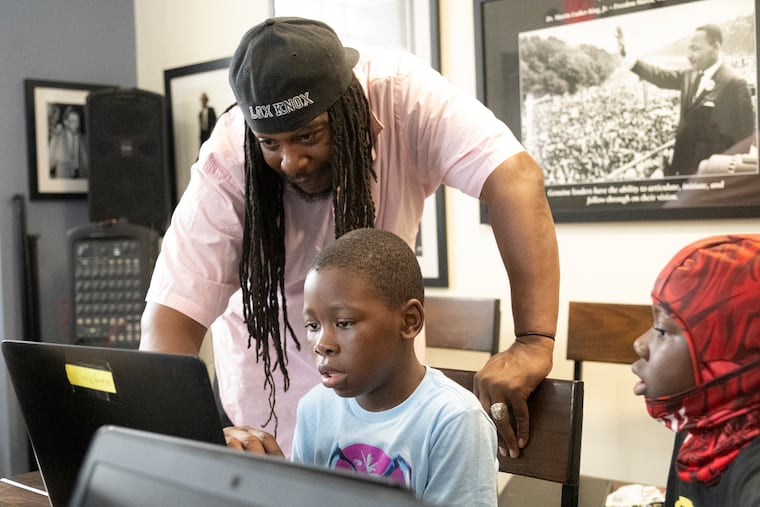Reversing pandemic-related learning loss must be a top priority | Editorial
Although the decline in test scores spanned all racial and economic levels, research shows students in poorer neighborhoods were disproportionately impacted. This is bad news for Philadelphia.

The steep drop in test scores for 13-year-olds should be cause for alarm for educators across the country, and that’s especially true in big cities such as Philadelphia, where Black and brown students have been impacted the most by the learning loss since the pandemic.
Average test scores plummeted nine points in math and four points in reading on the National Assessment of Education Progress (NAEP), which is considered the nation’s report card. The drop in math test scores was the largest in 50 years.
The alarming decrease lines up with other testing data in Philadelphia that show only 17% of students in third through eighth grades met the state standard for math in the 2021-22 school year, down from 22% in 2018-19. Proficiency in English also dropped from 36% to 34% during the same period, while in science, just 37% of students met the state standard, down from 40% before the pandemic.
The plunging test scores point to a crisis in public education brought on by the pandemic. The sharp rise in student absenteeism combined with a youth mental health crisis and the exodus of teachers compound concerns that a generation of students may never catch up.
» READ MORE: Philly’s kids can’t succeed in school if they’re not showing up to class | Editorial
Although the decline in test scores spanned all racial and economic levels, research shows students in poorer neighborhoods were disproportionately impacted. Many of those students had less access to the internet and spent more time doing remote learning. As a result, two years of COVID-19 shutdowns and disruptions upended 20 years of gains in closing the education gap.
There’s plenty of blame to go around. Former President Donald Trump’s mismanagement of the pandemic worsened and prolonged broader recovery efforts. Meanwhile, many Democratic lawmakers and the powerful teachers’ unions fought the return to in-person learning for too long.
The pandemic also spurred much uncertainty, anxiety, and politicization of science and mask mandates that deepened the educational divide. The ongoing culture battles over book banning, Pride flags, and transgender students only further distract school boards, teachers, students, and parents from the goal of education.
The challenge now is a return to normal but with an added urgency to make up the lost ground. The first step is to acknowledge the long-term impact the pandemic will have on the preparedness of the future workforce if it is not addressed. One study found that the learning loss will hamper economic growth for the next 50 years.
Cherelle Parker, who is likely to become Philadelphia’s mayor in 2024, proposed lengthening the school day and implementing year-round school. At first blush, that makes sense, but there are complications, including the added cost, opposition from teachers’ unions as well as some parents, and the fact that some schools lack central air-conditioning for those sweltering summer days.
» READ MORE: Mayoral candidates need real plans to fix the city’s troubled schools | Editorial
From 2000 through 2004, Philadelphia tried year-round education at Grover Washington Jr. Middle School in Olney, but the experiment ended after it showed little promise. Parents, teachers, and administrators in Richmond, Va., have been ensnared in a heated debate over year-round education. Los Angeles embraced it in the 1980s to combat a population boom, but by 2015, only one school remained in the program.
More to the point, research shows year-round school doesn’t increase test scores because it doesn’t result in more class times. Likewise, adding time to the school day has had mixed results, boosting test scores in some schools but not all in others.
Despite the lack of success, Philadelphia Superintendent Tony B. Watlington Sr. proposed a year-round pilot program. That is not a game changer, so why bother? However, Watlington’s other plan to have students read more and teach phonics makes sense.
While there are no easy solutions to make up for the lost time, studies show intensive and targeted tutoring is the best way to boost scores and close the achievement gap. But that can be expensive, and finding enough qualified tutors is difficult given the teacher shortage.
Federal and state lawmakers must work with local school districts to boost funding to help solve the education crisis. The pandemic claimed more than a million American lives, and cost trillions in lost economic output and impaired health outcomes — it cannot be allowed to claim a generation of student learning.